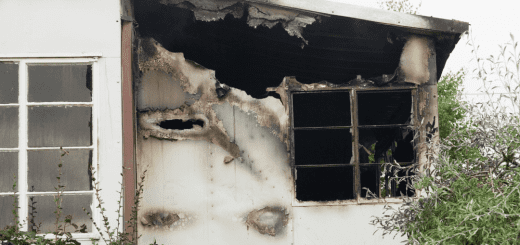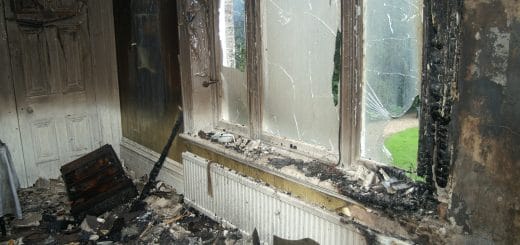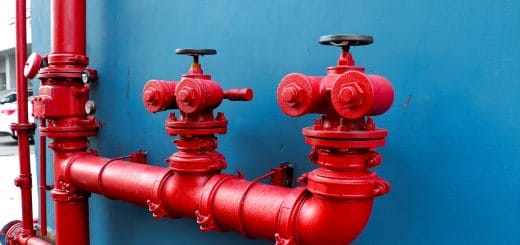Fire Hazards in the Fall – How to Protect Your Property
The fall season brings many great things such as amazing foliage changes, traditions, and holidays, however, it has its own unique set of fire hazards. Here are some fire hazards you should be aware of during the fall season to avoid them:
- Burning a fire outdoors when the fire dangers are high.
- Leaving candles unattended, this is especially true when it comes to Halloween and leaving Jack-O-Lanterns or centerpieces on your table.
- You may be inclined to use a space heater; however, they can be a fire hazard.
- Improper maintenanceMaintenance is the routine care, inspection, and repair of a... More and use of fireplaces and furnaces as it gets colder.
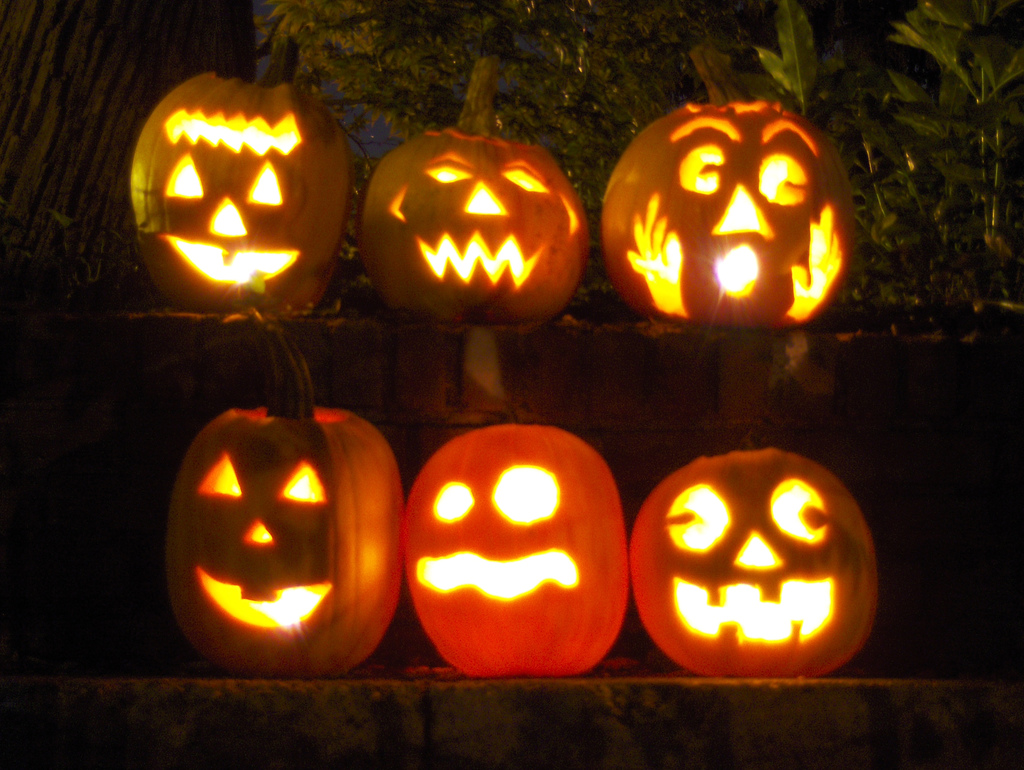
It is important to keep yourself and your family safe during the fall season. Here are some fire safety tips to follow:
- Have a safety meeting with your family so that everyone knows what to do in case of a fire.
- Avoid burning anything outdoors when fire danger is high.
- If burning candles (especially Jack-O-Lanterns) never leave them unattended.
- Your chimney should be inspected every fall.
- The batteries in your smoke alarms and carbon monoxide (CO) detectors should be changed and the alarms should be tested.
In this guide, we will help you understand fall fire hazards, how to prepare your property for fall, do the proper fire-resistant home maintenanceMaintenance is the routine care, inspection, and repair of a... More, how to practice safe outdoor practices, properly use fire safety equipment, how to prepare your family for an emergency, and to have your insurance and documentation ready in case an emergency happens. If your home is damaged by fire or smoke, it is very important to call a fire damage restoration professional immediately.
Understanding Fall Fire Hazards
It is important to understand fall fire hazards so that you can make sure to prevent them and keep you and your family safe.
There are various causes of fires in the fall that should be prevented to avoid damage to your home. One very common cause of fires is dry leaves and vegetation. You should make sure to clean any dry or wet leaves around your home as they can ignite easily. Also, accumulated wet leaves can cause moldMold is a type of fungus that grows in damp or humid conditi... More as they stack and sit, and it is a perfect dark and damp space for moldMold is a type of fungus that grows in damp or humid conditi... More growth to form.
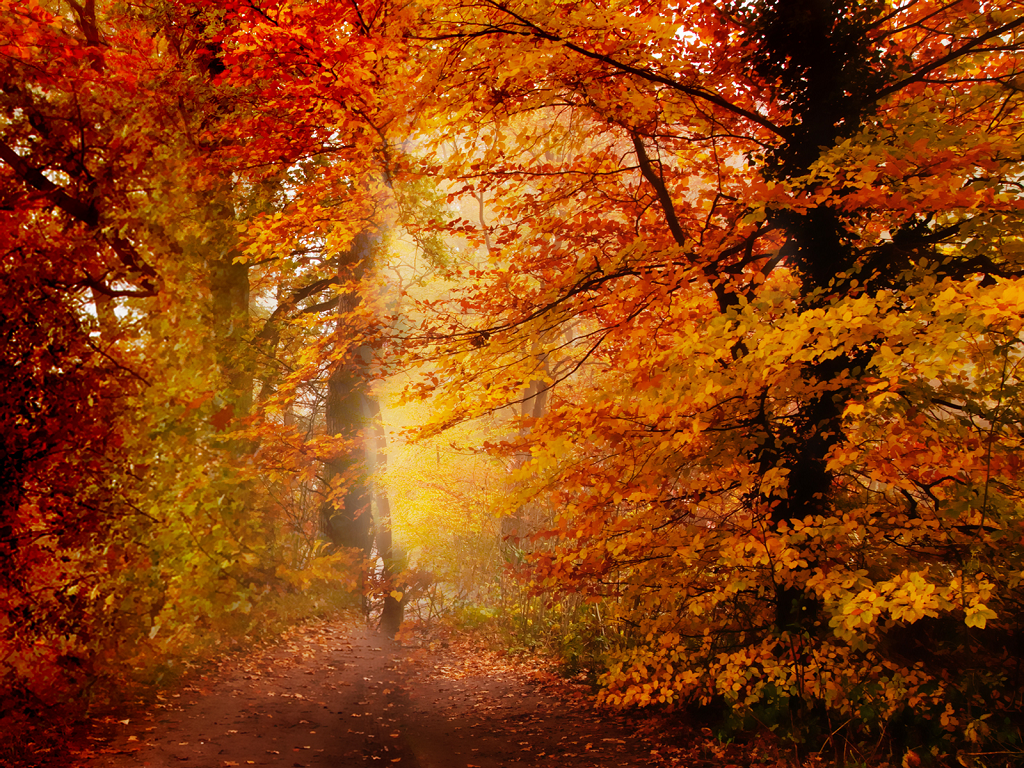
Burning leaves outdoors can also be a fire hazard. Smoke from burning leaves can be toxic as well as irritating as it can contain dangerous particles and gases. Also, burning leaves can be dangerous in certain conditions.
If you use a heating source like a space heater to keep warm, make sure to take proper precautions to avoid fires. You should ensure that you keep it away from pets and children at a safe distance, do not go to sleep with the heating element on, keep it on a hard surface that is not flammable, and keep it away from paint or other flammable materials.
Fall weather conditions can contribute to fire risks. During the fall season, drought can intensify if the temperature is unusually warm. If there is also low precipitation and snowpack, the extreme heat can cause dry soil and death of larger trees. These conditions can cause extreme wildfires which can spread quickly and severely burn everything around them.
Fall Fire Hazard Statistics
It is important to mention that fire safety should be practiced outdoors as well as indoors. When it comes to the outdoors, the statistics are startling. For example, according to the National Center for Environmental Information, in September there were 4,896 fires that burned 434,693 acres which is 88.79 acres burned/fire. For January through September, 44,195 fires burned 2,442,088 acres which is 55.26 acres burned/fire. We must make sure to be safe outdoors if we burn fires. It does not only affect us, although you could get injured if you burn a fire outdoors when fire danger is high, but you can also hurt the environment and cause a major fire in the surrounding areas.
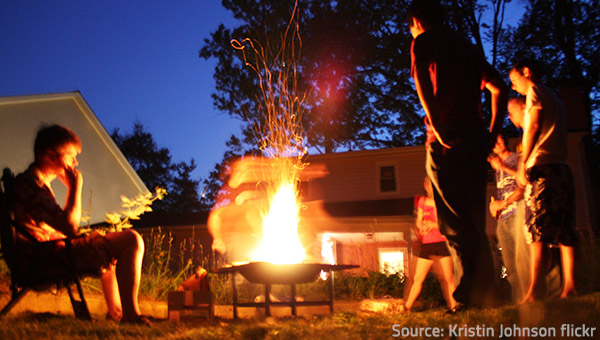
When it comes to structureStructure refers to the framework or components of a buildin... More fires due to decorations, the statistics are very important to know. It is important for you to safely use decorations for all holidays so can enjoy the holiday without the possibility of damaging your property. The U.S. fire department responds to an estimated average of 790 home structureStructure refers to the framework or components of a buildin... More fires per year that began because of decorations. These fires caused an annual average of one civilian fire death, 26 civilian fire injuries, and $13 million in direct property damage. Therefore, to avoid injury as well as damage to your property, make sure to use decorations safely.
Another way that you can cause a fire indoors is by using a heating element such as a space heater. According to the National Fire Protection Association (NFPA), heating equipment is a leading cause of fires in U.S. homes as they caused one in six home structureStructure refers to the framework or components of a buildin... More fires between 2016-2020. Local fire departments responded to an estimated average of 44,210 home structureStructure refers to the framework or components of a buildin... More fires per year in that time period. These fires resulted in annual losses of 480 civilian deaths, 1,370 civilian injuries, and $1 billion in direct property damage. If not used properly, heating elements can be very dangerous, so make sure to take the proper precautions when you are using them so you can avoid injury and property damage.
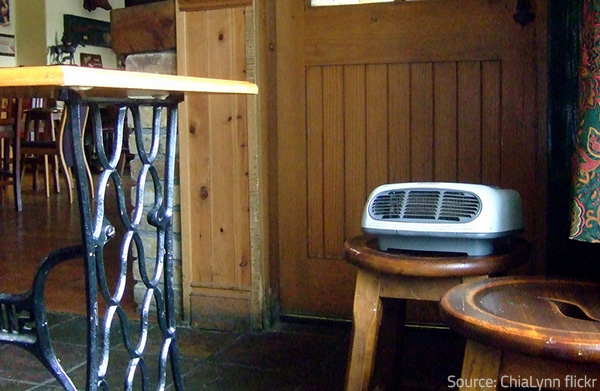
Fall Property Preparation
When it comes to keeping your property safe from fire during the fall season, you should take the proper precautions to be prepared for the season. Here are some things you can do:
- Clear leaves and debris from your property and dispose them properly
You should clear all leaves and debris from your property as dried leaves and vegetation can ignite easily. Any dead vegetation should be removed from under your deck or porch and within 10 feet from the home. You should replace any flammable vegetation such as pine, evergreen, junipers, and such with lower growing, less flammable species. Also, make sure to cut the lawn often and clear the area of leaves, brush, dead limbs, and fallen trees.
You should also dispose of the raked leaves by placing them in a lawn-and-leaf bag made from biodegradable materials instead of plastic bags. You can also compost the leaves and use them for your garden beds and flower beds in the spring.
- Clean your roof and gutters
It is important to have your gutters and your roof cleaned and inspected. You should do this often and especially if there was a storm which could create additional debris that could fill the gutters.
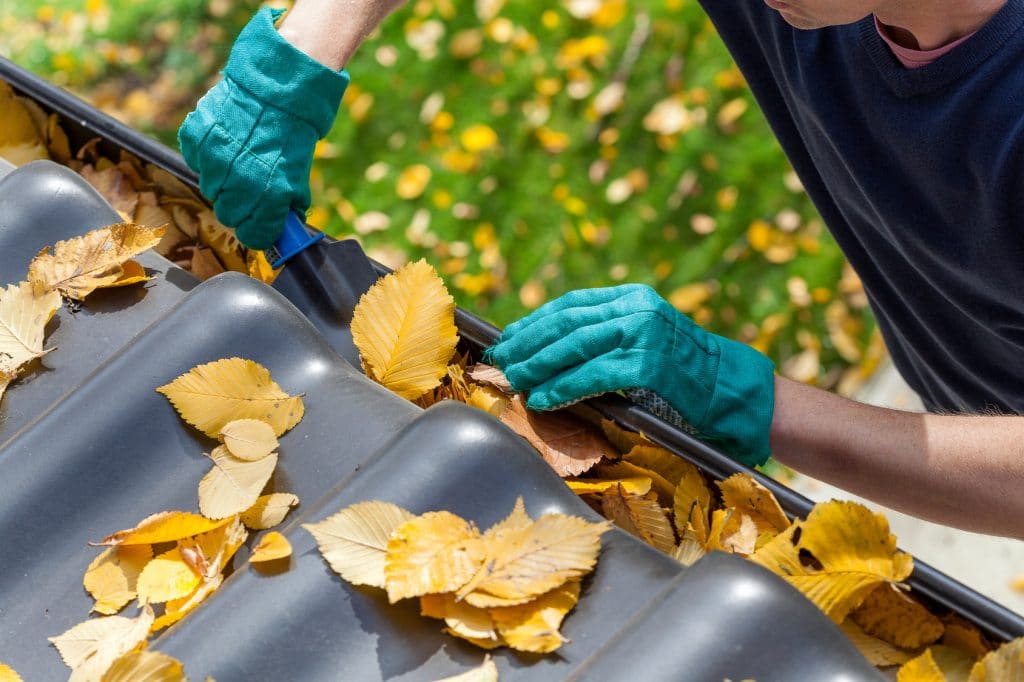
- Fire-resistant landscaping and plant selection:
You should only plant deciduous plants that are fire-resistant, do not accumulate a lot of dead leaves which can be flammable, do not have a high resin content, and that grow slowly.
- Safe storage of firewood and flammable materials:
Firewood should be stored at least 30 feet away from your home. Any flammable materials should be stored in cool, dry, and well-ventilated areas, away from heat sources or direct sunlight. Flammable materials should not be stored in boiler rooms, mechanical rooms, or electric equipment rooms.
Fire-Resistant Home Maintenance
To prevent fires at your home, it is important to do proper fire-resistant maintenanceMaintenance is the routine care, inspection, and repair of a... More. Here are some things you can do:
- Inspect your siding and roof
Your roof and siding should be regularly inspected. The National Fire Protection Association recommends that you inspect shingles or roof tiles and replace or repairRepair is the act of fixing or restoring damaged property, m... More those that are loose or missing so that ember penetration can be avoided. You should make sure to box in and protect your eaves with ignition-resistant or noncombustible materials. Also, roof and attic vents should be screened so that you can avoid ember entry. Homes with wood or shingles are at a higher risk of being destroyed during a wildfire. The best protection is to re-roof with materials such as composition, metal, clay, or even tile. Make sure to block any spaces between roof decking and covering so you can prevent embers from catching. You should also make sure that you remove any accumulated vegetative debris from the roof.
- Do proper maintenanceMaintenance is the routine care, inspection, and repair of a... More on your chimneys and fireplace
You should properly clean your chimney as creosote can build up in the chimney flue which increases the chance of a chimney fire. Your chimney should be cleaned at least once per year and it’s always best to have it cleaned by a professional.
It is also important to watch out for signs of chimney issues so that you can prevent costly damage. If you notice a strong, unpleasant odorAn odor is a smell, often detectable by the human nose, whic... More coming from your chimney, sootSoot is fine black particles composed of carbon and other ma... More buildup inside the chimney or on the fireplace walls, excessive smoke inside the home when you use the fireplace, have trouble starting a fire or keeping it burning, or you notice cracks or damage to the chimney’s masonryMasonry is the craft or construction of structures using mat... More, that’s a sign of trouble.
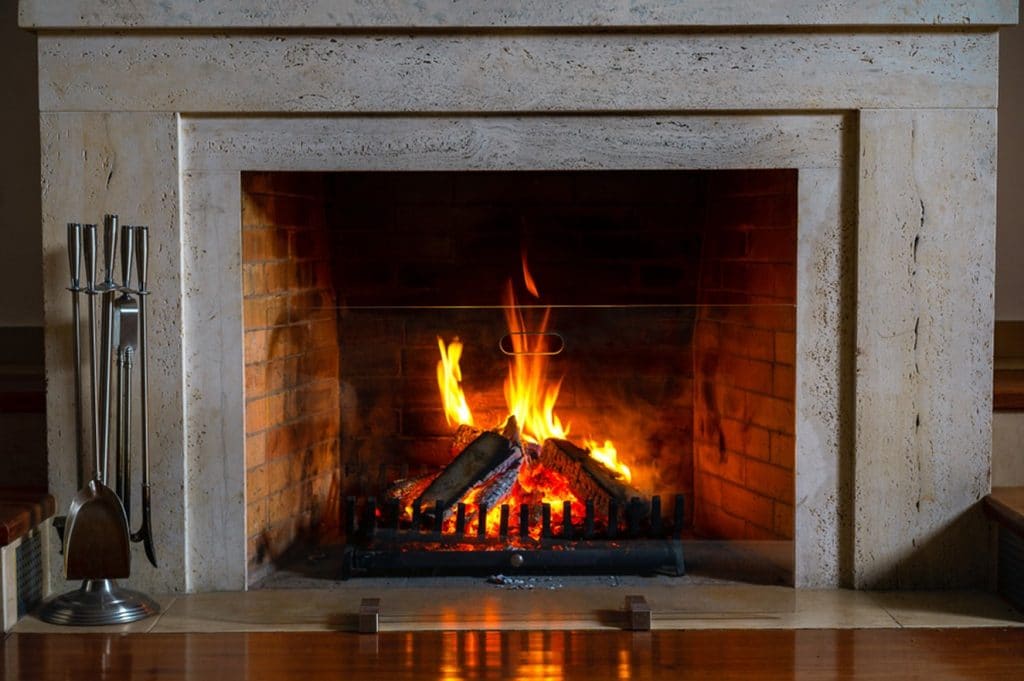
If you think your chimney may need maintenanceMaintenance is the routine care, inspection, and repair of a... More, make sure to react right away so further damage can be avoided.
- HVAC and dryer vent cleaning
You should have your HVAC and dryer vents cleaned regularly. This will help prevent a fire in your home as the accumulation of lint can cause fires. Here are some things you can do to prevent vent fires:
- Clean the lint after every load of laundry
- Replace accordion-style ducts with rigid metal ducts
- Clean the dryer duct annually or more frequently
Your HVAC vent should be inspected and cleaned by a professional at least once per year. This will help improve air quality, reduce energy consumption, and prevent a potential fire hazard.
- Exterior lighting considerations
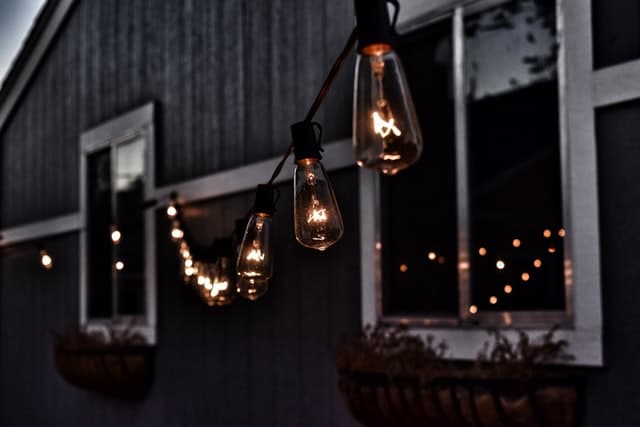
You should make sure that exterior lighting is done with fire safety in mind. This means that proper lights are used where needed and precautions are taken to prevent fires. Here are some things you can do:
- Only use decorative lights that are made for outdoor use. They should be marked “outdoor” or “indoor/outdoor.”
- Your lighting should be clear of debris as build-up of mulch and debris can be a fire risk.
- Your lighting should always be waterproof and cleaned regularly.
- Always use LED lighting instead of halogen to produce less heat and be more energy efficient.
- Make sure that extension cords for outdoor lights run to their own circuit box. Therefore, in case of an electrical issue, you will only have one circuit blow which reduces the risk of fires.
Safe Outdoor Practices
Fires can happen any time outdoors or indoors. There are some common activities that people do in the fall that could leadLead is a heavy metal that can be toxic to humans, especiall... More to outdoor fires, such as grilling and campfires. You should take all the possible precautions not to cause a fire outdoors. Here are some tips.
Here are some campfire safety tips:
- Always check for restrictions or bans in the area.
- Pick a spot that is clear of any combustible material and low-hanging branches.
- Use existing fire pits or circles if available or if not available, surround the campfire with rocks.
- Keep the campfire at least 15 feet from tents, and 25 feet away from buildings.
- Never leave a campfire unattended or unsupervised as they can spread and cause wildfires or damage to your camping equipment.
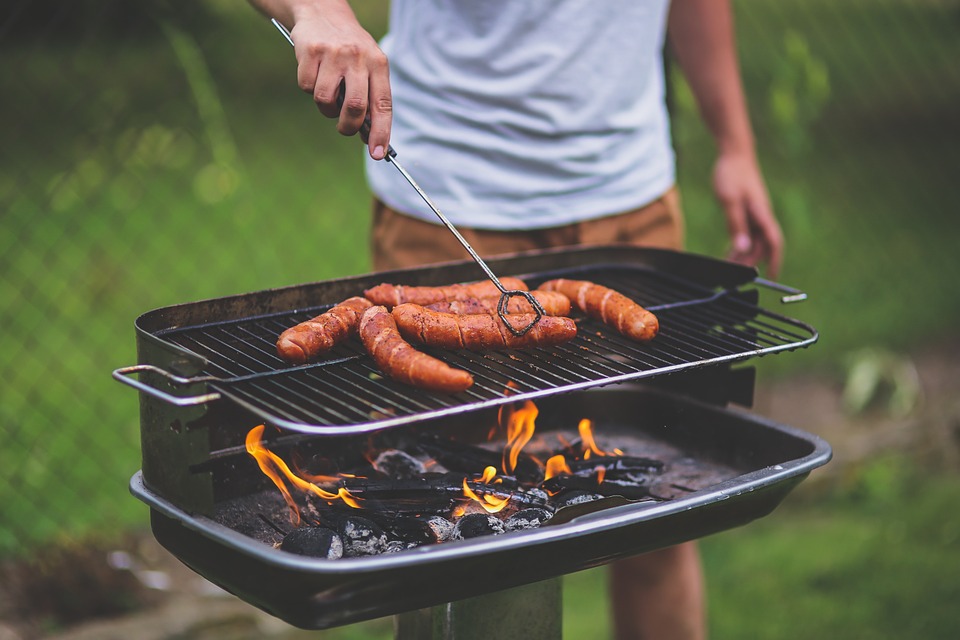
Cooking outdoors can be fun and very tasty, however, if done carelessly, it can leadLead is a heavy metal that can be toxic to humans, especiall... More to fires. It is important to ensure your safety and the safety of others when cooking outdoors. Here is what you should do:
- Never wear loose-fitting clothes when cooking outdoors.
- Young children and pets should be kept away from cooking areas.
- Grilling outdoors should only be done in well-ventilated areas, and it should never be done in an enclosed location.
- Make sure to never pour or squirt lighter fluid or any type of fire-starting fuel right onto the lit grill.
Another cause of fires is improper disposal of yard waste; therefore, you should make sure to dispose of it properly. Instead of burning yard waste, which can cause a fire and smoke around your home, you can use green waste disposal, free chipping services, community clean-up days, composting, or commercial vegetation management businesses instead of burning your yard waste. If you live in an area where you must burn your yard waste, make sure to follow local codes and ordinances regarding outdoor burning.
If you are using power tools or other equipment outside, it is important to use the equipment properly to reduce the risk of fires. Here are some tips:
- Use properly sized fittings and parts for any power tools you use.
- Always make sure that tool cutting edges are sharp and clean.
- Make sure to remove adjustment keys and tools before you operate any power tool.
- Power cords should be intact to prevent shocks and fire hazards.
- If you are working in dimly lit areas, bring in portable lights.
- All flammable materials should be removed if sparks are possible, or they can be covered with fire-resistant blankets.
- Make sure to keep your working area clean and orderly. Never leave tools balanced precariously.
Fire Safety Equipment
To keep your home safe from a fire, it is important to take all the fire safety precautions necessary and have the proper equipment handy so that you can be prepared in case of an emergency. Being able to quickly access and use fire safety equipment can help you avoid significant fire damage.
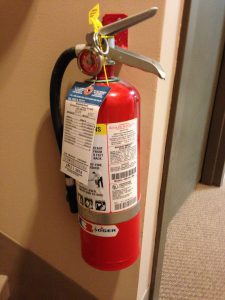
This is the general rule for placing extinguishers in your home:
- They should be placed near exits or exterior doors
- Place the proper extinguishers near hazards they are meant to protect against
- Place them in plain sight and no higher than 5 feet off the floor
- Avoid placing extinguishers near heat sources
Although they look and sound similar, CO alarms and smoke alarms are designed to protect from different hazards. To help protect your family you should install both UL Listed CO alarms and smoke detectors.
Create an escape plan with your family so that you can be safe during a fire. Get everyone together in your household and create a plan. Make sure to walk through your home and inspect all the possible exits and escape routes. If you have children, you should consider drawing a floor plan of your home and mark two ways to get out of each room, which includes windows and doors. Also, there should be a marking for each smoke alarm. Determine a safe meeting place that everyone in your household is aware of. Finally, practice the plan until everyone is fully confident on what they need to do in case of fire so they can escape safely.
Fire blankets are a handy tool to help keep you and your family safe. These blankets are made of fire-resistant materials, such as woven fiberglass and are used to distinguish small fires, especially in the kitchen. They work by smothering the fire’s oxygenOxygen is a chemical element essential for combustion and li... More supply which will extinguish the flames. They can also be used to protect individuals from heat and flames during a fire emergency by wrapping them in a blanket and providing a barrier against the heat and flames, which will help them escape from the fire safely.
Emergency Preparedness
Always make sure that you have everything you need for an emergency. You should have an emergency kit, a clear communication plan, evacuation routes and meeting points, and make sure that you stay informed about local fire conditions so that you can evacuate if needed.
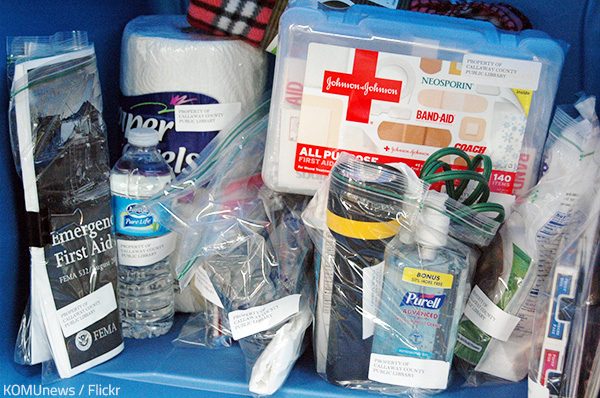
You and your family should always have an emergency kit ready as you never know when an emergency can strike. The kit should include these items: Water (a gallon per person for several days), food (for several days), battery-powered or hand crank radio, flashlight, first aid kit, extra batteries, whistle, dust mask, plastic sheeting and duct tape, moist towelettes, garbage bags and plastic ties, wrench or pliers, manual can opener, local maps, and cell phone chargers and a backup battery.
You should also make sure that you have a proper communication plan in place before an emergency happens. These are the guidelines for steps to consider in a communication plan with your family according to the Federal Emergency Management Agency (FEMA):
- Collect contact info for family and other important people/offices such as medical facilities, doctors, schools, or service providers. Create a paper copy of this info and store it in a safe place.
- The contact info should be shared with the members of your household, and everyone should carry a copy of it in their backpack, purse, or wallet. You can also create a wallet-sized card with this info and share it with everyone in your household.
- This plan should be practiced regularly with other household members so that everyone is aware what to do.
Because an emergency can strike at any time, your family should have a well-planned and practiced evacuation plan already in place that outlines main escape routes and alternative routes and accessible exit points. Each family member should be assigned a duty during the emergency so that there is no confusion if evacuation is necessary.
Make sure to always stay aware of the local fire conditions and fire danger ratings. Your outdoor activities should be limited on days when there is a high fire risk, especially if there are periods of strong winds. You should create a communication plan with your family and friends and always have a designated contact person outside the fire area.
Insurance and Documentation
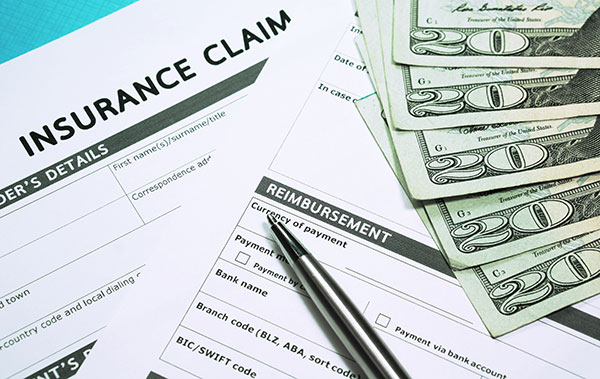
In case of an emergency, you should have all your documents and your homeowner’s insuranceHomeowner’s insurance is a policy that provides financial ... More policy in order. The first thing you should do is ensure that you have the proper fire insurance policy in place in case there is a natural disaster. Here are some things you should do to be prepared for a natural disaster:
- Understand your policy: Make sure to read through your policy and understand your coverage.
- Make updates to your policy: Make sure to do an annual review of your policy and make any necessary updates.
- Be aware of your home’s value: You should have enough coverage to rebuild your home.
- Consider additional coverage if necessary: You should purchase additional coverage if you live in an area where natural disasters are common.
- Shop around: Always make sure to compare policies from different companies so that you can find the best deal.
You should take photos or videos of your belongings so that you have a record of them. Make sure to also write descriptions, year, make, and model numbers if appropriate. For any valuable items, get an appraisal to determine the items worth. Make sure this inventory list is kept somewhere where it is easily accessible in case of a disaster.
Create a digital backup of important documents so that you have them available in case you are not able to get to a paper copy or if the paper copy gets ruined.
Protect Your Home from Fire Damage this Fall
The fall fire hazards outlined earlier can seem scary and daunting, however, the key to being prepared for an emergency is to take the necessary precautions. Be sure to understand fall fire hazards, what causes them, and how to prevent them in your home. Preparing your home for the fire hazards of the fall season can help avoid fires and major fire damage to your property. Make sure to complete fire-resistant maintenanceMaintenance is the routine care, inspection, and repair of a... More such as inspecting your roof and HVAC system and cleaning your vents. If you like to cook outside, make sure to take safety precautions so you do not cause a fire outdoors and damage your property.
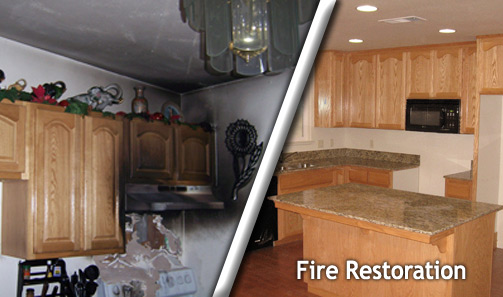
Another way you can keep yourself and your family safe is to ensure that you have the proper fire safety equipment in convenient places so that you are prepared in case there is a fire. It is also of utmost importance that you and your family take the proper steps when it comes to emergency preparednessPreparedness is the state of being ready to respond to emerg... More, which includes creating an emergency kit, having an escape plan, and communicating with one another. Finally, make sure that all your documents and your homeowner’s policy are up to date, and you are aware of what is covered in case of an emergency.
Have you experienced a devastating fire at your property? Fire damage restoration professionals can help rebuild and restore your home after a fire. Fires cause widespread damage including devastating structural damage as well as damage from smoke and sootSoot is fine black particles composed of carbon and other ma... More. If you do not call restorationRestoration is the process of returning a property to its pr... More professionals to manage the fire damage cleanup right away, the damage will only get worse.
Fire damage restorationFire damage restoration is the process of repairing and rest... More professionals can handle every aspect of the restorationRestoration is the process of returning a property to its pr... More including structural repairs, soot and smoke damage cleanup, and odorAn odor is a smell, often detectable by the human nose, whic... More removal.










